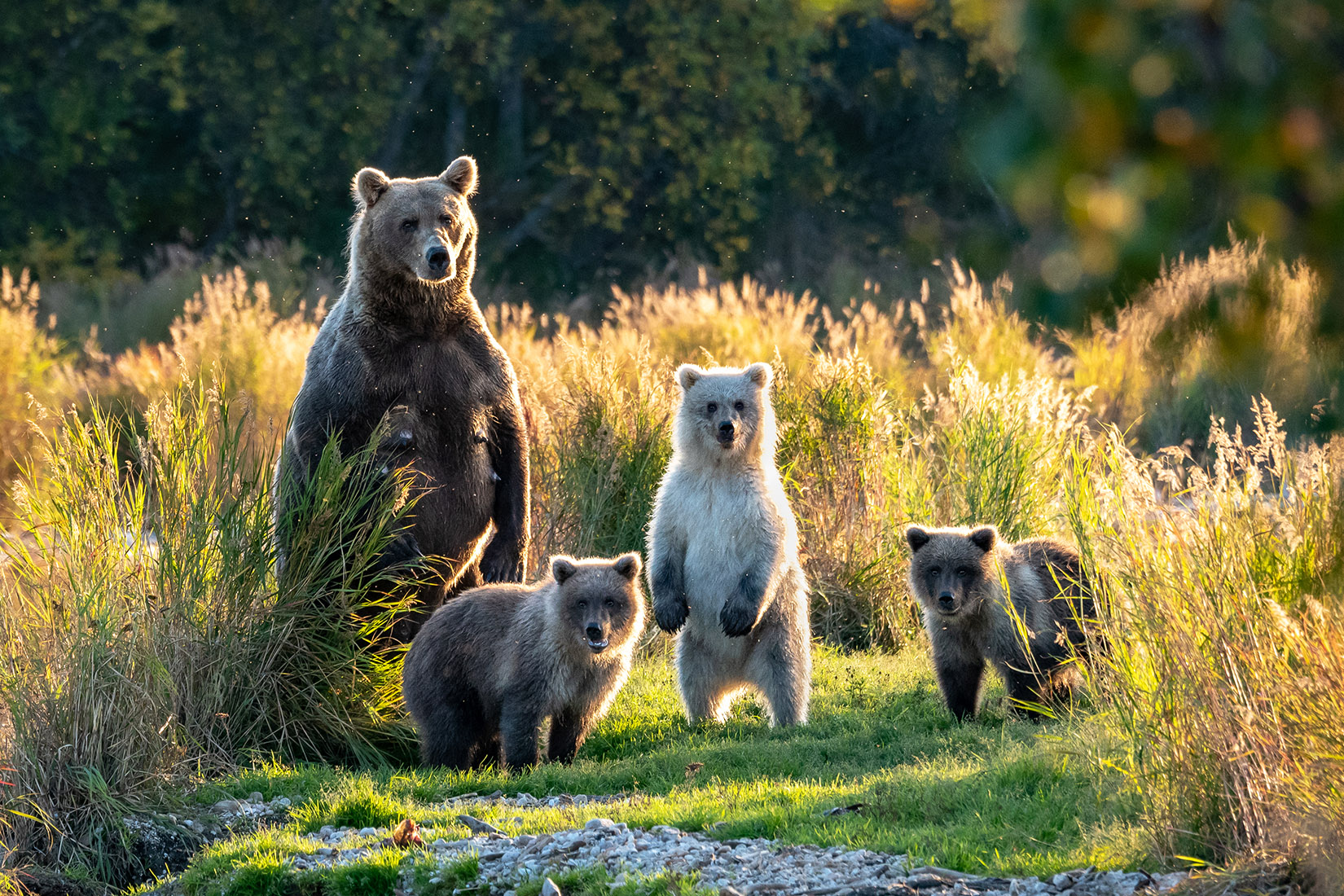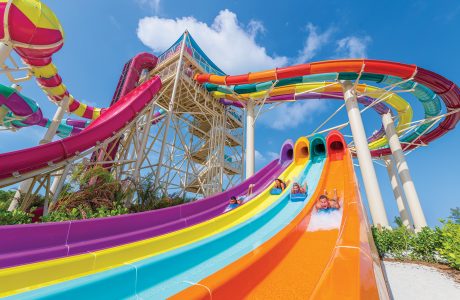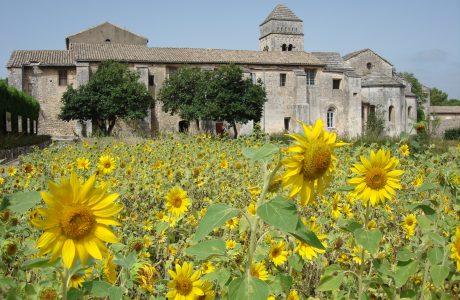From skyline to shoreline, more than 400 animal species call Alaska home. This vast number—as varied as the land itself—lures millions of adventurers to the Last Frontier every year. But here’s a secret: One of the best ways to explore Alaska’s wilderness is by sea.
When you cruise to Alaska, the journey along the Inside Passage provides unprecedented access to the region’s captivating wildlife. The somewhat narrow channel is located between hundreds of smaller islands to the east and the mainland to the west. Lined with rainforests, mountains, inlets and glaciers, it’s the ideal location for spotting Alaska’s distinctive animal attractions.
Here are some of the natives you’ll want to “meet” on your trip:
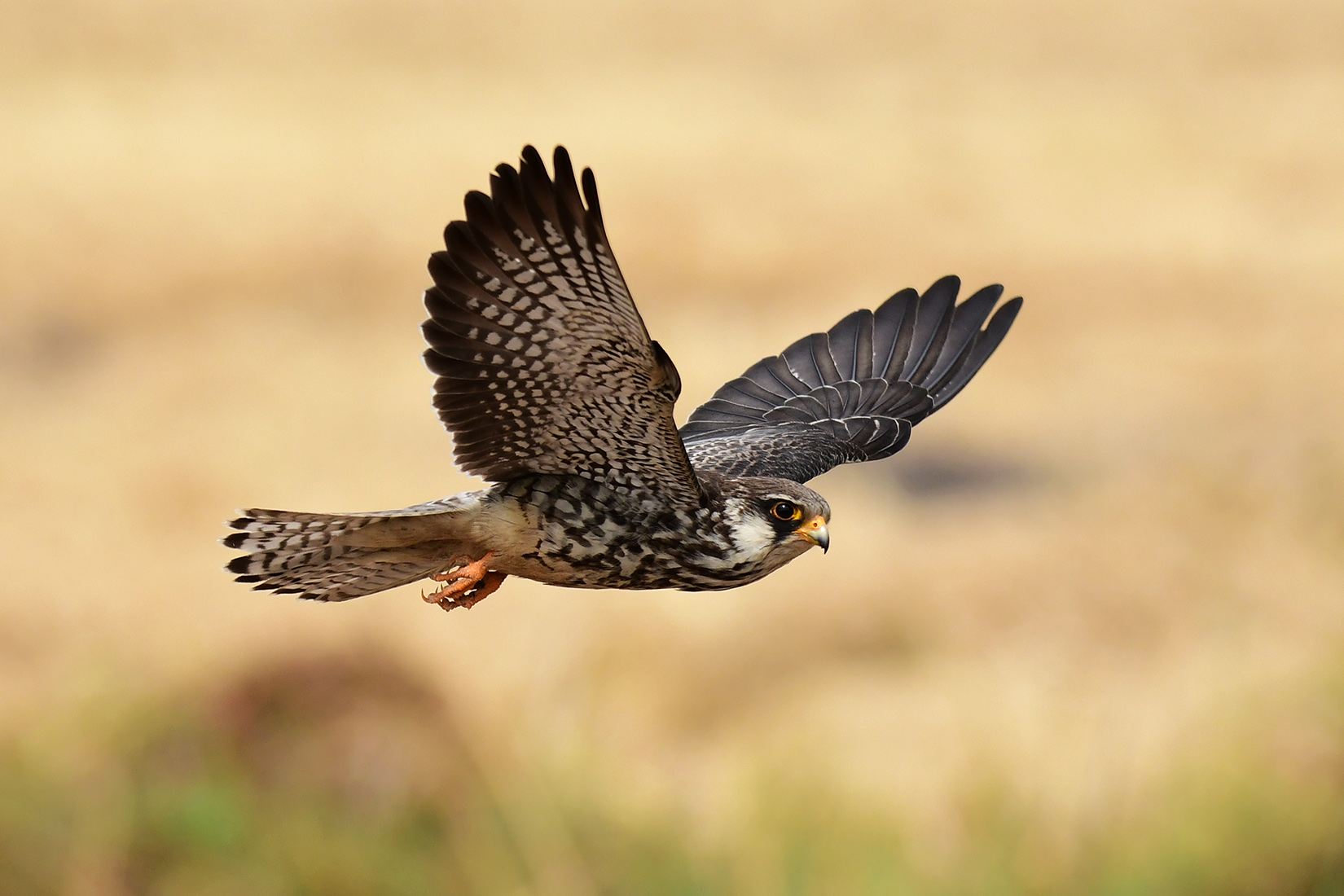
The peregrine falcon is the fastest animal on earth.
Credit: Shutterstock
1. Falcons
Alaska boasts all three subspecies of the North American peregrine falcon, which has the distinction of being the fastest animal on the planet—an adult can top out at 220 MPH when diving for its prey.
Some of these incredible creatures will head south during Alaskan winters, as far as Argentina, and then return thousands of miles home a few months later. However, the Peale’s peregrine falcon calls Alaska’s coastline home all year, leaving its territory only if food becomes scarce. Keep an eye out for these fast, fascinating creatures!
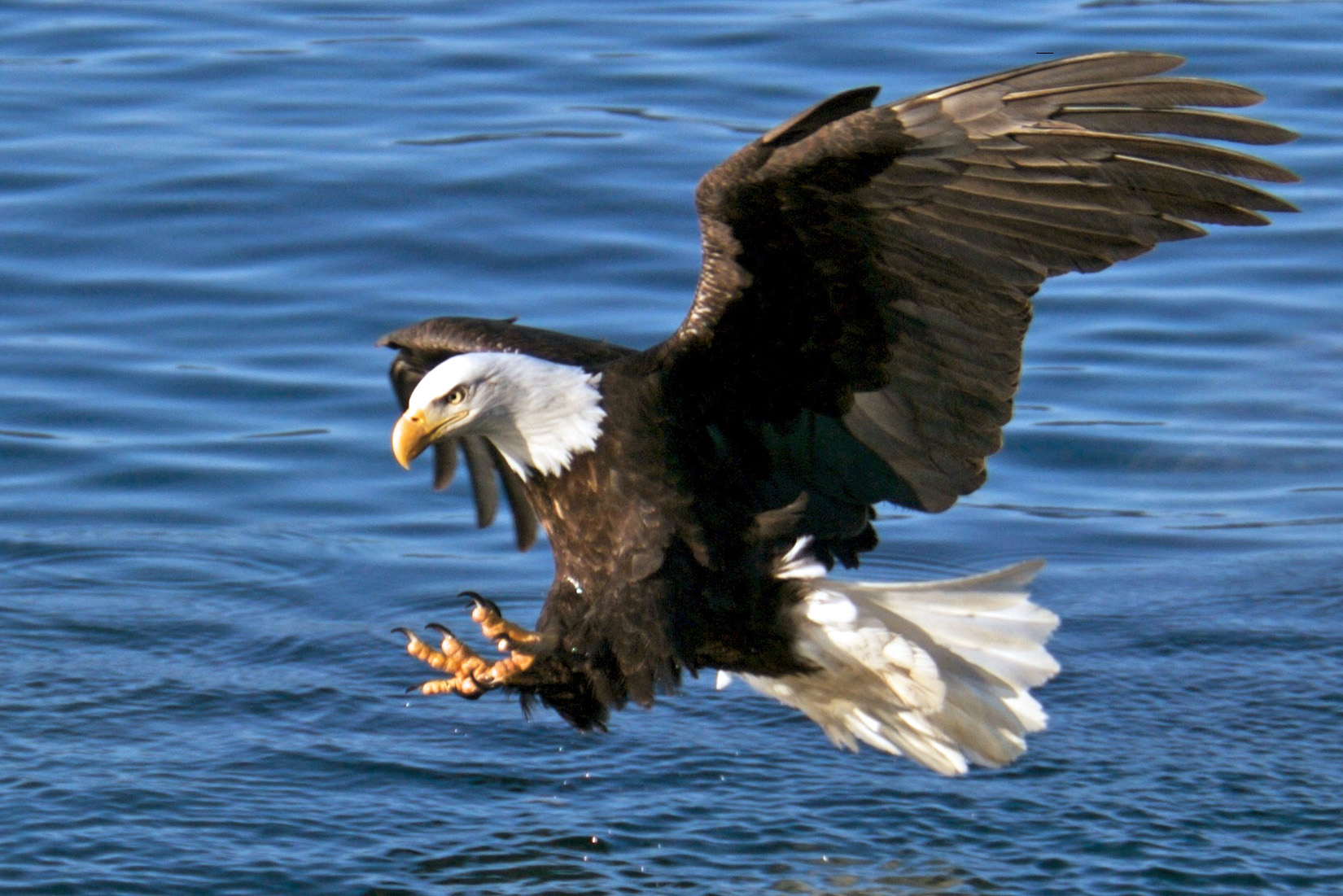
The national bird of the United States is plentiful in Alaska.
Credit: Royal Caribbean
2. Bald Eagles
Alaska lays claim to the largest population of bald eagles in the world—it’s estimated up to 30,000 of the birds live there—there’s a joke that they’re as common in Alaska as robins are in Ohio. With a wingspan of about 7 feet, this majestic national bird is easily identifiable in the wild, thanks to its distinctive white head of feathers.
According to the Alaska Department of Fish and Game (ADF&G), you can find them near the coast, offshore islands, and interior lakes and rivers. You’re likely to find high concentrations of these birds of prey on the islands of southeast Alaska, where they’ll nest in old-growth timber along saltwater shorelines and mainland rivers. Since fish are the bald eagle’s main food of choice, you may be lucky enough to see one diving for its next meal.
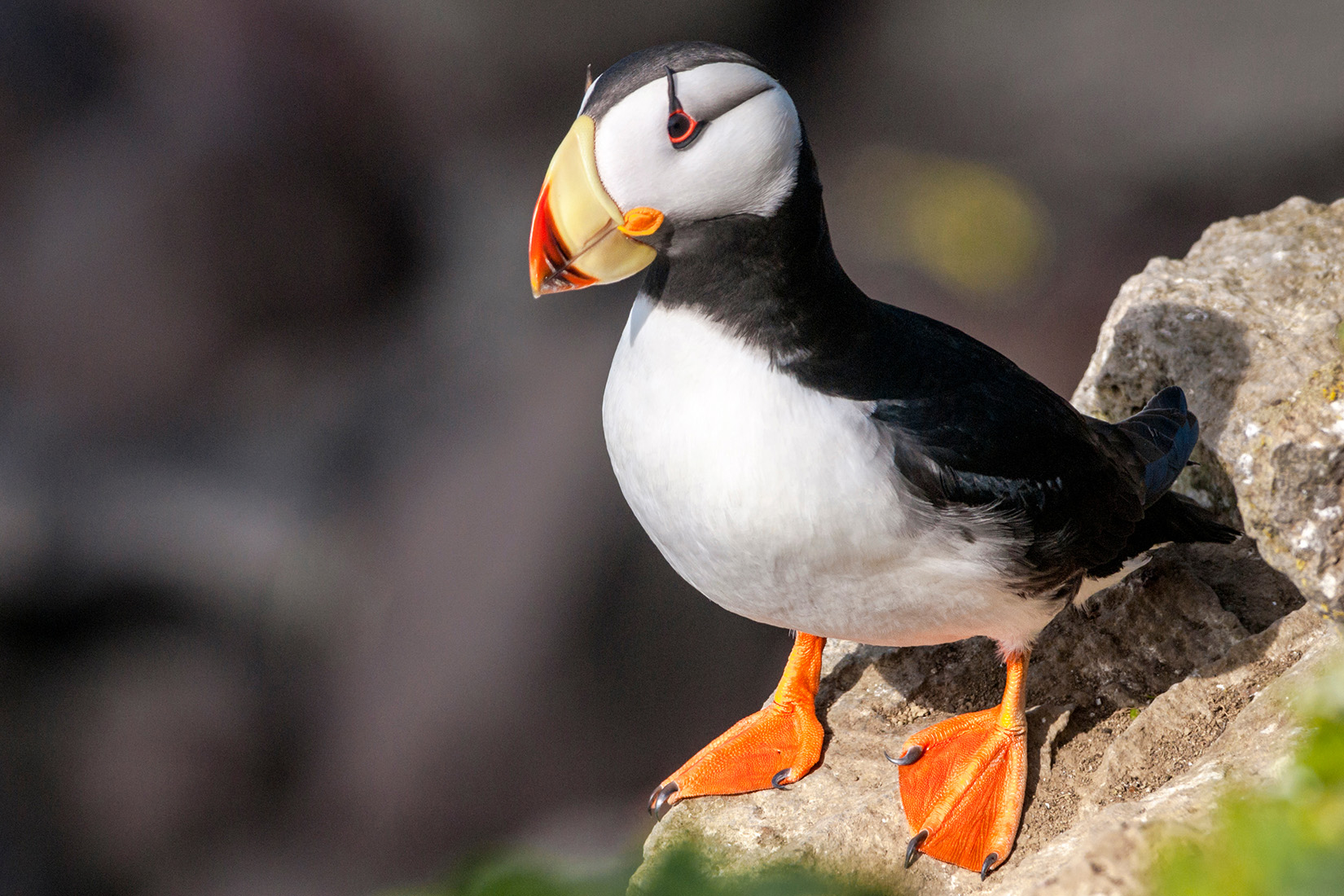
It’s hard to overstate the cuteness of these small, much-loved birds like the horned puffin pictured here.
Credit: Shutterstock
3. Puffins
These distinctive seabirds can be found all along the Alaskan coastline. The 49th state is home to both the tufted puffin, with its golden head plumes, and the horned puffin, similar to its Atlantic cousin but with small fleshy “horns” above the eyes of adults. Horned puffins make their nests on cliffs (unlike tufted puffins that burrow), so keep an eye out for their orange and yellow beaks against grey rock outcroppings as you cruise through the Inside Passage, especially if you have a balcony stateroom.
Fun fact: Puffins often carry multiple fish crosswise in their bills to feed their young, so that’s not a glutton you see but a caring parent!
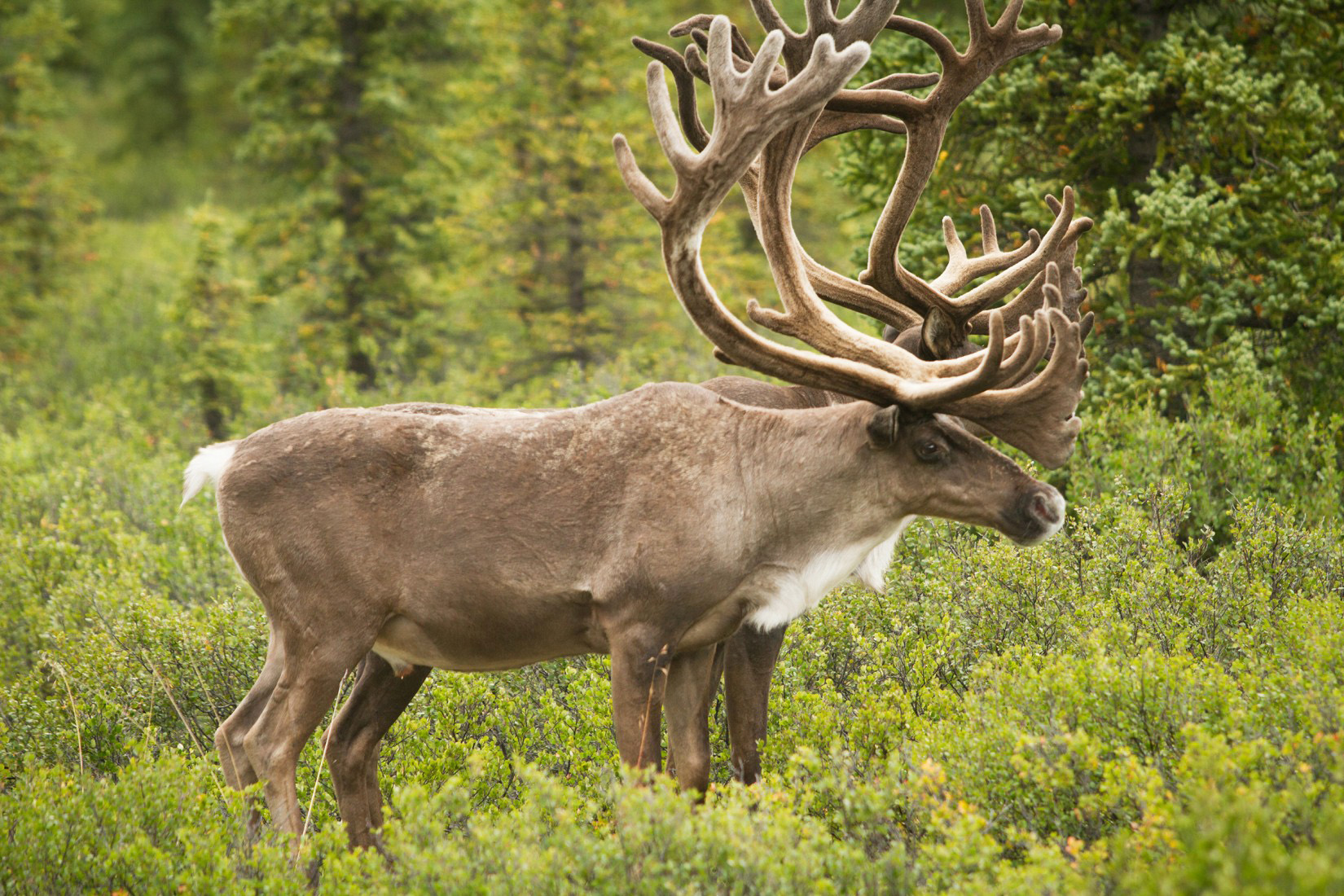
Both male and female caribou have antlers.
Credit: Royal Caribbean
4. Caribou
Caribou are one of the most recognized symbols of the great wild north, reportedly outnumbering Alaskan residents. Much smaller than moose, caribou typically weigh between 175 and 400 pounds, and they are the only member of the deer family in which both males and females grow antlers.
They migrate regularly in pursuit of food like plants, mushrooms and shrubs, and travel some 400 miles between summer and winter, but they prefer treeless tundra and mountains, says the ADF&G. In the summer, you’re likely to spot them in remaining snow patches in the woods, where they’re trying to avoid insects.
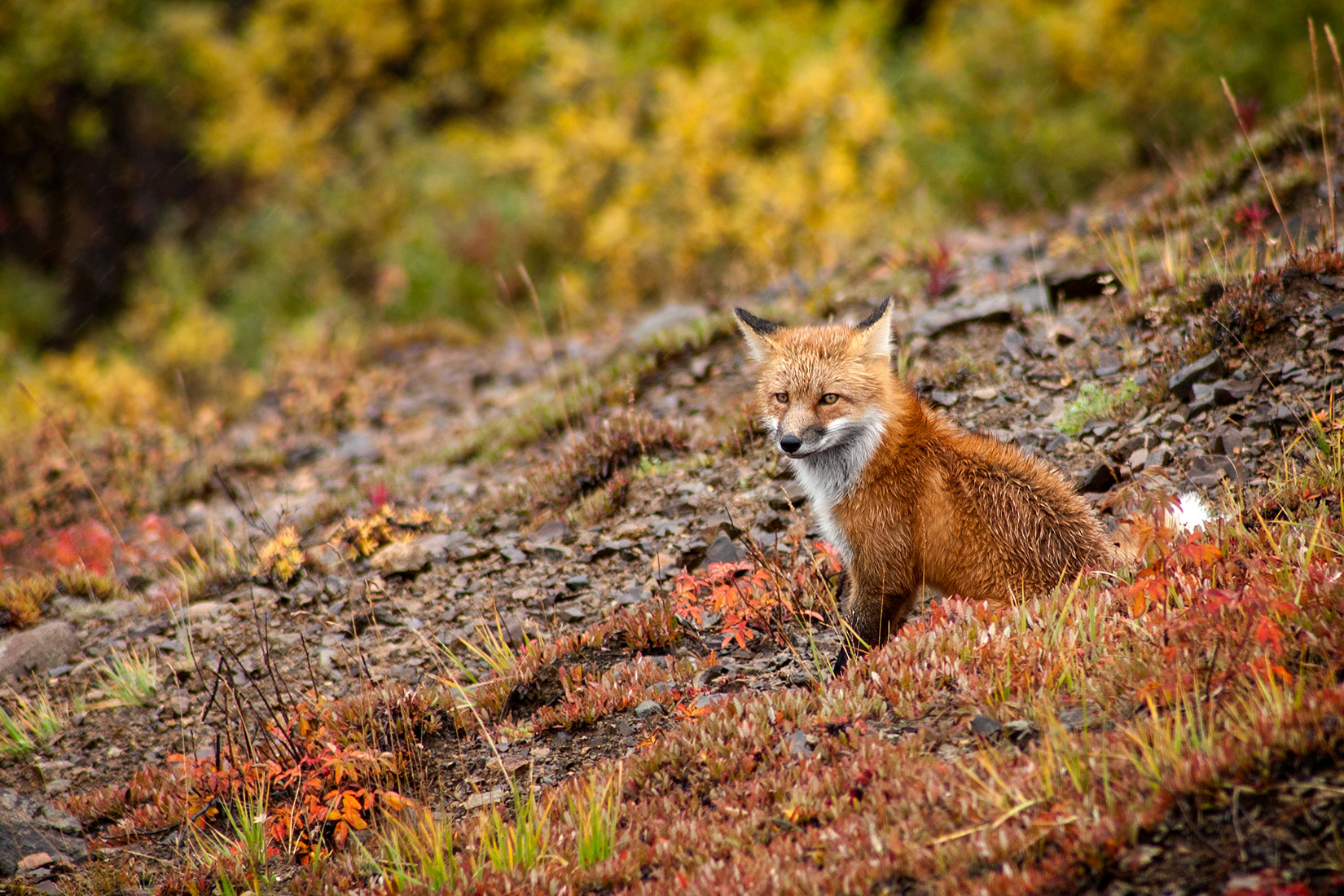
The red fox can be found throughout most of Alaska.
Credit: Shutterstock
5. Foxes
The red fox ranges far and wide in Alaska, and it is more visible than its counterpart, the arctic fox. You can easily point them out by spotting their reddish coat and black feet. But don’t be fooled—ADF&G explains that the color of their fur can vary from light yellow to deep auburn within the same litter, and can even seem black. No matter what though, the white tip of their bushy tail distinguishes the species, so you should keep your eyes peeled, especially on one of our Alaskan cruisetours.
These omnivores eat everything from vegetation and insects, to birds and hares (that they can catch!). To make their homes, they’ll often expand the dens of smaller animals, like marmots, conveniently also on their menu.
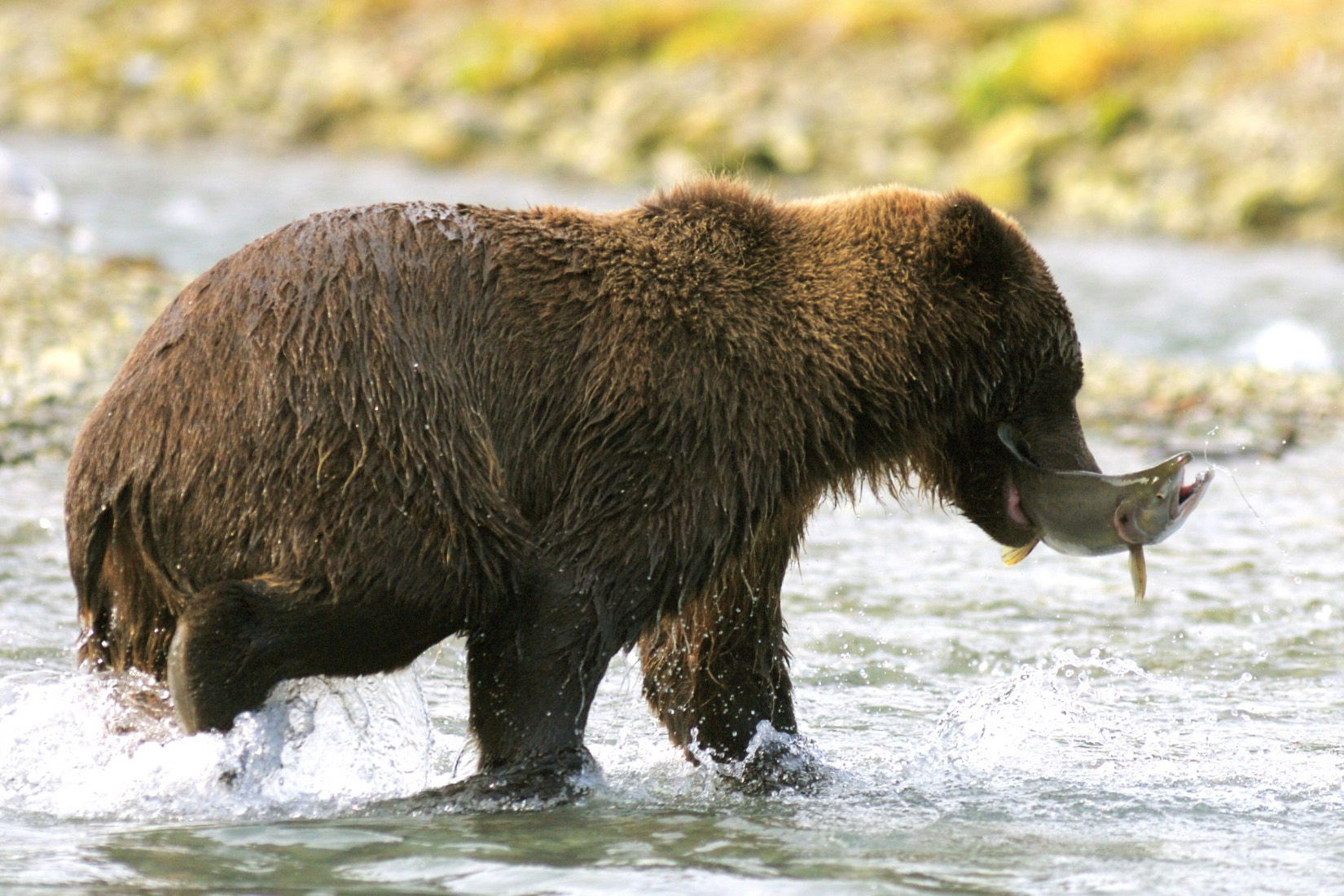
Brown bears are naturally talented fishers.
Credit: Royal Caribbean
6. Bears
An estimated 50,000 black bears and 35,000 brown bears live in Alaska, making the state one of the world’s best places to see bears in the wild. Black bears, which actually range in color from jet black to white, can weigh between 200 and 500 pounds; while brown bears, known as grizzlies, tip the scales at 500 to 800 pounds.
Depending on the availability of food sources, such as salmon, berries, roots, and even moose and caribou, there can be as many as one grizzly bear per square mile in parts of southern Alaska, according to the ADF&G. You’re likely to find both bear species in spring and summer during dawn and dusk, when they’re looking for food. It’s also common to see them along the shoreline, scouting fish and other food that may have washed ashore.
Looking forward to seeing these incredible Alaskan creatures in person? Head here to see how Royal Caribbean can take you to the Last Frontier.
